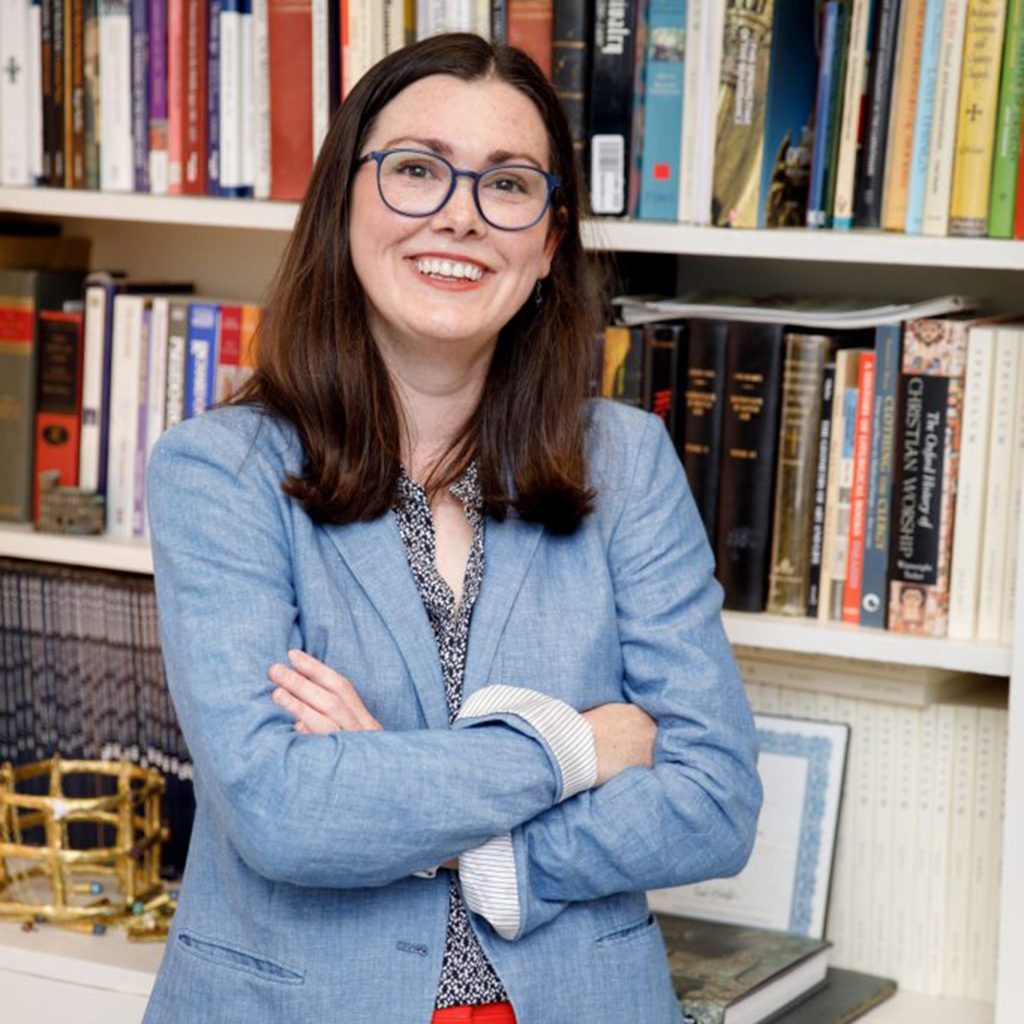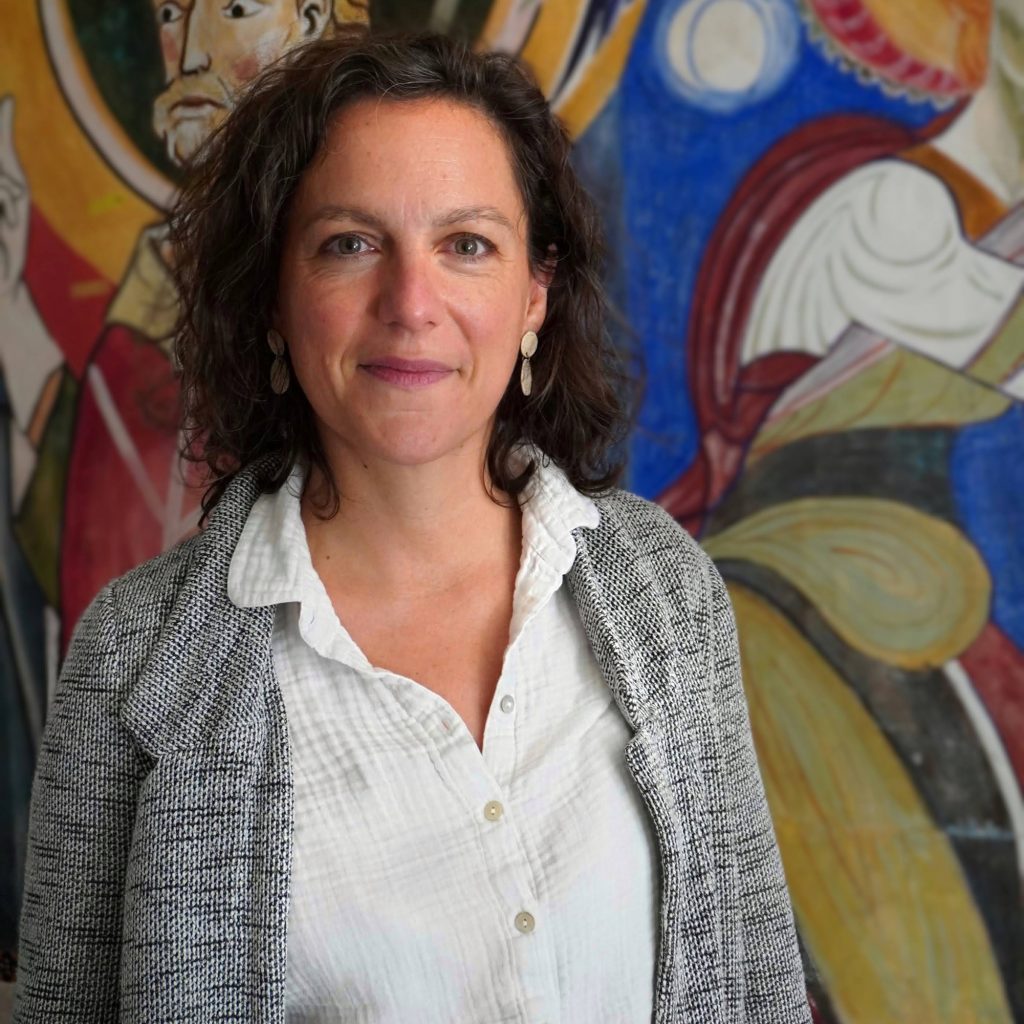
Jennifer M. Feltman (PI)
Feltman is a specialist in French gothic sculpture with research interests in the design, construction, and preservation of façade sculptures. She is co-director of the Limestone Sculpture Provenance Project, a member of the Chantier scientific de Notre-Dame, and the team of researchers studying the recently excavated fragments of the Notre-Dame choir screen. Her publications include the edited volume, The North Transept of Reims Cathedral: Design, Construction, and Visual Programs (Routledge, 2017), The Long Lives of Medieval Art and Architecture co-edited with Sarah Thompson (Routledge, 2019), and her forthcoming book, Moral Theology and the Cathedral: Sculptural Programs of the Last Judgment in France, c.1200-1240 (Brepols).

Alexandre Tokovinine (co-PI)
Tokovinine is an anthropological archaeologist with a specialty in Maya epigraphy and 3D scanning. His work addresses the transformations of the ancient complex societies in the context of the Maya civilization and the issue of the meanings of color on Maya monuments. He is co-author of Veiled Brightness: A History of Ancient Maya Color (University of Texas Press, 2009). His other area of expertise is visual documentation of the finds in the field and of the museum collections. He relies on 3D scanning, digital drawing, photography, and photogrammetry. He supervises the Visual Documentation Lab at UA.

Grégory Chaumet (co-PI)
Chaumet is a trained DPLG architect and holds a Ph.D. in Art History and Archaeology from the Faculty of Arts and Humanities at Sorbonne Université. Specializing in 2D and 3D computer graphics, he has been working as a research engineer for the 3D scanning and modeling mobile platform, PLEMO 3D, since 2015. Since 2010, he has also been teaching urban history at the School of Engineering for the City of Paris in the Architecture department. He has published in a collective article in Notre-Dame de Paris, la science à l’œuvre, edited by Philippe Dillmann, Pascal Liévaux, Aline Magnien, and Martine Regert (CNRS–Le Cherche-Midi, 2022). His studies of La maison d’Ourscamp have been published in Paris Gothique, edited by Dany Sandron (Picard, 2020).

Jeremiah Stager (co-PI)
Stager is an archaeologist who works to help preserve cultural resources through documentation and digital recreations of historic sites. He uses modeling software, photogrammetry, and narration to producing immersive documentary style videos and 3D tours. To date, Stager has completed 10 projects that include a 19th century railroad shop complex, the first capital of Alabama, and multiple early 20th century worker villages. He has also produced over 100 photogrammetry models of prehistoric and historic artifacts as well as a number of historic structures.
Collborators

Jennifer L. Roth-Burnette
Roth-Burnette is a musicologist who specializes in the plainchant and polyphony that circulated within and around the worshipping community of Notre Dame de Paris during the gothic era. Her contributions include a metadata approach to understanding extemporaneous melodic composition, published in Ars Antiqua, Music and Culture in Europe c. 1150-1330 (Brepols, 2020), and a related database housed at the Alabama Digital Humanities Center.

Stéphanie Duchêne
Duchêne is an engineer at the Laboratoire de Recherche des Monuments Historiques, specializing in wall paintings and polychromy. She has been in charge of studies and monitoring restoration projects since 2007. Her area of expertise includes medieval polychromy. Recent projects include a study prior to the restoration of the central portal of Notre-Dame Cathedral in Reims, a study of the ancient polychromy uncovered during the restoration of Notre-Dame Cathedral in Paris, a material study of the rood screens at Notre-Dame Cathedral in Chartres and Notre-Dame Cathedral in Paris, and the restoration of the portal at Saint Maurice Cathedral in Angers. She holds a Master's degree in Chemistry applied to heritage conservation and restoration from Ca' Foscari University in Venice. In 2021, she began a research project entitled, "La polychromie des portails des cathédrales gothiques : apport des sciences des matériaux à l'histoire des techniques artistiques," under the direction of L. Bellot-Gurlet Paris VI, P. Plagnieux, (Univ. Paris I Panthéon Sorbonne).

Iliana Kasarska
Kasarska is a specialist in medieval iconography and the theological meaning of the gothic portals. She studies the long life of the Gothic portals, focusing on issues of re-employment of sculptures, perception over time, and memory. Kasarska also focuses on archaeological studies of the technical execution: carving, construction and polychromy. She is author of La sculpture de la façade occidentale de cathédrale de Laon ; eschatologie et humanisme (Picard, 2008) and editor of the collection Mise en œuvre des portails gothiques – architecture et sculpture (Picard, 2011).

Markus Schlicht
Schlicht is an art historian and research fellow at the French National Centre for Scientific Research. He has published numerous studies on the architecture, sculpture and polychromy of the Gothic period in France, in particular on the cathedrals of Rouen and Bordeaux. His latest book (in collaboration with Aurélie Mounier and Maud Mulliez) focuses on the reconstruction and significance of medieval polychromy in English alabaster panels: The Colours of English Alabaster Panels: Medieval Polychromy, Production, and Perception (Ausonius, 2021).